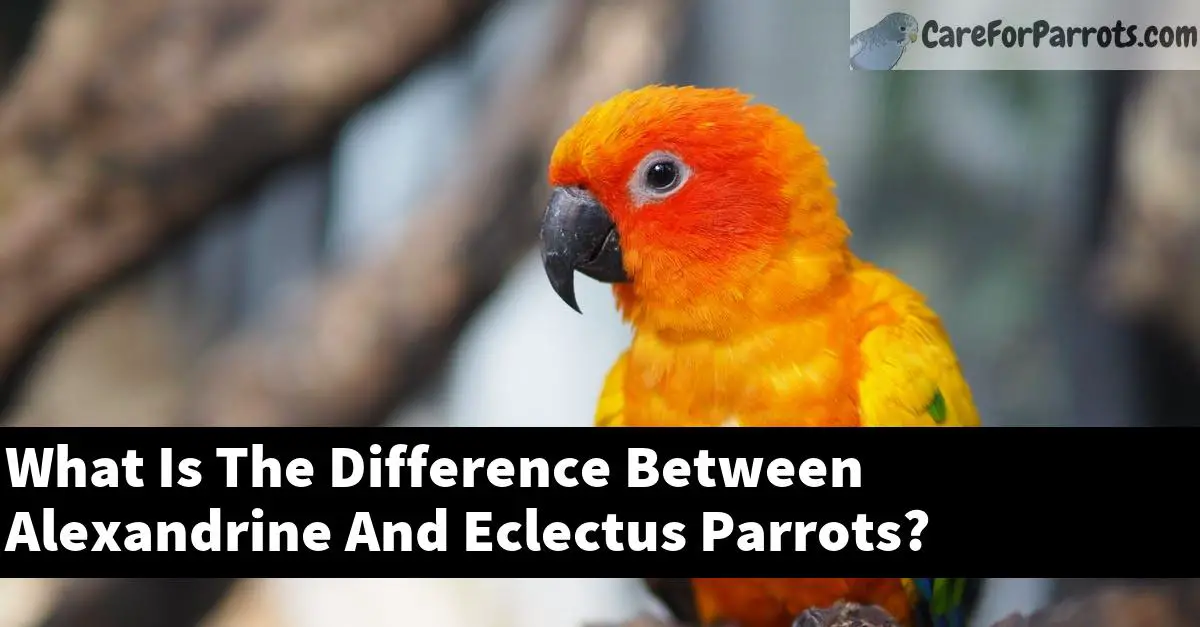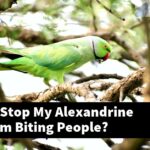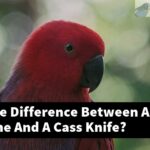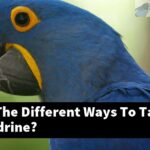It’s fascinating how diverse the world of parrots is, with various species boasting unique characteristics and personalities. In this article, we’ll dive into the differences between two intriguing species: the Alexandrine Parrot and the Eclectus Parrot.
As you read on, you’ll learn about their origins, appearances, behavior, and more. Understanding these distinctions will help you decide which species might be the perfect companion for your home.
While both parrots share some common traits, they each have their own special features that set them apart. After learning about these differences, you’ll be better equipped to make an informed decision when it comes to choosing your new feathered friend.
So let’s delve into the captivating world of Alexandrine and Eclectus parrots!
Table of Contents
Origins and Distribution
Alexandrine Parrot
The Alexandrine Parrot is native to the forests of Southeast Asia, including countries like India, Nepal, and Sri Lanka. Named after Alexander the Great, these parrots are known to have been kept as pets by royalty and nobility throughout history. The natural habitat of Alexandrine Parrots consists mainly of forests, woodlands, and agricultural lands.
Eclectus Parrot
Eclectus Parrots are found in the rainforests of New Guinea, Solomon Islands, and northeastern Australia. These birds prefer the dense, lush environment of the rainforest, where they can easily find food and shelter. Their striking coloration and distinctive appearance make them a favorite among bird enthusiasts.
Physical Appearance
Size and Shape
Alexandrine Parrots are medium-sized birds, measuring around 23-25 inches in length. They have a robust body, strong wings, and a broad tail. Their beaks are large and powerful, making them capable of cracking open hard nuts and seeds.
Eclectus Parrots are slightly smaller, with an average length of 17-20 inches. They have a more slender build compared to Alexandrine Parrots, with elongated tails and relatively smaller beaks.
Coloration
One of the most striking differences between these two species is their coloration. Alexandrine Parrots have predominantly green plumage, with a maroon patch on their shoulders and a bright blue stripe on their nape. Males also have a black ring around their necks, while females lack this feature.
Eclectus Parrots exhibit sexual dimorphism, meaning males and females have drastically different appearances. Males have a bright green body with blue and red accents on their wings, while females are predominantly red with a purple-blue belly and a black beak.
Behavior and Personality
Socializing
Both Alexandrine and Eclectus Parrots are social birds that enjoy interacting with their human caretakers. However, they exhibit differences in their social tendencies.
Alexandrine Parrots are known for their outgoing nature, while Eclectus Parrots tend to be more reserved and observant. Nevertheless, both species can form strong bonds with their owners when given proper attention and care.
Vocalization
Alexandrine Parrots are renowned for their excellent talking abilities, as they can mimic human speech quite accurately. They also have a range of natural calls, including whistles and squawks.
Matiniy 2 Pcs Pirate Parrot on Shoulder Life Sized Artificial Parrot Toy for Costume Dress-up Accessory for Halloween Party(Multicolor)
$14.99 (as of 21/12/2025 07:48 GMT +03:00 - More infoProduct prices and availability are accurate as of the date/time indicated and are subject to change. Any price and availability information displayed on [relevant Amazon Site(s), as applicable] at the time of purchase will apply to the purchase of this product.)Bird Toys, Parrot Toys for Large Birds,Natural Corn cob and Loofah Slices Bird chew Toys for African Grey Parrots, Macaws, Cockatoos, Amazon Parrot and other Small and Medium-Sized Parrot (Colorful)
$12.97 ($12.97 / count) (as of 21/12/2025 11:07 GMT +03:00 - More infoProduct prices and availability are accurate as of the date/time indicated and are subject to change. Any price and availability information displayed on [relevant Amazon Site(s), as applicable] at the time of purchase will apply to the purchase of this product.)Kaytee Fiesta Parrot Food, Nutritious and Fun Blend, Supports Skin, Feather, Digestion, Brain and Heart Health, 4.5 pounds
16% OffEclectus Parrots are less known for their talking abilities but can still learn a few words and phrases. They tend to be quieter than Alexandrine Parrots and have a more gentle and melodic voice.
Care and Maintenance
Diet
Both species require a balanced diet, consisting of fresh fruits, vegetables, nuts, and seeds.
Alexandrine Parrots enjoy a varied diet and may prefer larger nuts and seeds due to their powerful beaks
Eclectus Parrots have a higher requirement for vitamin A, so incorporating foods rich in this nutrient, such as sweet potatoes and leafy greens, is essential for their wellbeing.
Housing and Enrichment
Both Alexandrine and Eclectus Parrots need spacious cages to accommodate their size and provide room for exercise. Since they’re active birds, providing ample perches, toys, and foraging opportunities is crucial to keep them mentally and physically stimulated.
Alexandrine Parrots may require more durable toys, given their strong beaks. Eclectus Parrots, on the other hand, can be more selective with their toys and may prefer softer materials that they can shred.
Lifespan and Health
Lifespan
Alexandrine Parrots have a lifespan of approximately 25-30 years, while Eclectus Parrots can live for 30-40 years. With proper care, a balanced diet, and regular veterinary check-ups, both species can enjoy a long and healthy life.
Common Health Issues
Both species are prone to similar health issues, such as respiratory infections, vitamin deficiencies, and obesity. Regular veterinary check-ups can help detect and address these issues early on. Proper hygiene, a balanced diet, and mental stimulation can also contribute to overall health and longevity.
Conclusion
In summary, Alexandrine and Eclectus parrots have unique characteristics that set them apart. From their distinctive appearances to their behavior and care requirements, understanding these differences can help you decide which species might be the perfect companion for your home. By providing proper care and attention, you can ensure a long and happy life for your feathered friend.
FAQ
Q: How can I tell the difference between a male and a female Alexandrine Parrot?
A: Males have a black ring around their necks, while females lack this feature. The coloration of both sexes is otherwise quite similar.
Q: Are Eclectus Parrots good talkers?
A: While they may not be as proficient as Alexandrine Parrots, Eclectus Parrots can still learn a few words and phrases. They tend to have a more gentle and melodic voice.
Q: What kind of toys should I provide for my Alexandrine or Eclectus Parrot?
A: Alexandrine Parrots may require more durable toys due to their strong beaks, while Eclectus Parrots may prefer softer materials that they can shred. Providing a variety of toys, perches, and foraging opportunities is essential for mental and physical stimulation.
Q: What is the ideal diet for Alexandrine and Eclectus Parrots?
A: Both species require a balanced diet of fresh fruits, vegetables, nuts, and seeds. Eclectus Parrots have a higher requirement for vitamin A, so incorporating foods rich in this nutrient is important.
Q: Can Alexandrine and Eclectus Parrots be kept together?
A: It’s generally not recommended to house different parrot species together, as they may have different social dynamics, care requirements, and potential for territorial disputes.
























